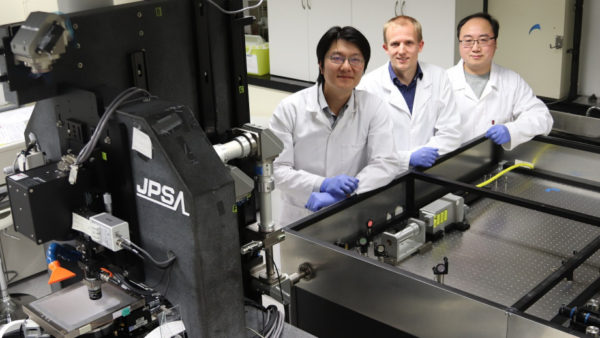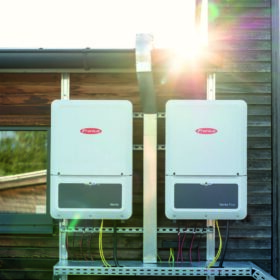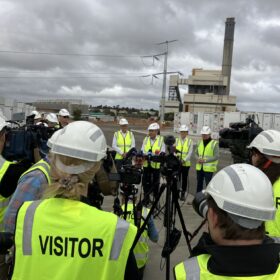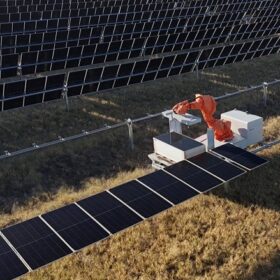Scientists at The Australian National University (ANU) in Canberra have produced a dual-sided silicon solar cell with a front conversion efficiency of 24.3% and a rear conversion efficiency of 23.4%, representing a bifacial factor of 96.3%. The performance represents an effective power output of approximately 29%.
Chief investigator Dr Marco Ernst said the figure outstrips the performance of the best single-sided silicon solar cell.
“This is a world record for selectively laser-doped solar cells and among the highest efficiency bifacial solar cells,” Ernst said.
The result, which the research team said has been independently verified by the Commonwealth Scientific and Industrial Research Organisation (CSIRO), was achieved by using specific laser-doping technology to fabricate the cells.
“Laser-doping uses lasers to locally increase electrical conductivity,” Ernst said.
“It is a low-cost, industry-compatible process for boosting solar cell efficiency.”
Principal investigator Dr Kean Chern Fong said the bifacial solar cells easily beat the performance of single-sided silicon solar cells and provide efficiency benefits for solar PV projects.
Bifacial solar cells, which are commanding an increasing share of the market, absorb light from both the front and rear surfaces of the device, capturing albedo light reflected off the ground and roof surfaces that would otherwise be lost.
“We have developed what I would call a true bifacial solar cell, as it has nearly symmetrical power generation capacity on both surfaces of the device,” Fong said.
“When deployed on a conventional solar farm, a bifacial cell absorbs direct incoming light, while also taking advantage of ground reflection, which can contribute up to additional 30% power generation.
“Bifacial solar cells are becoming increasingly important in the roll out of solar farms and are expected to have a market share of over 50% in the next five years.
“Our work demonstrates the incredible capabilities of this technology.”

Image: Eric Byler/ANU
The result is the latest milestone for scientists at ANU, which received $3.6 million in funding from the Australian Renewable Energy Agency (ARENA) in January as part of the Australian Centre for Advanced Photovoltaics Infrastructure project.
Earlier this month, scientists working on the PV potential of ultra-thin 2D materials discovered the ability of the materials to generate solar energy can be controlled by “twisting” the angle between two layers of the material.
This content is protected by copyright and may not be reused. If you want to cooperate with us and would like to reuse some of our content, please contact: editors@pv-magazine.com.








By submitting this form you agree to pv magazine using your data for the purposes of publishing your comment.
Your personal data will only be disclosed or otherwise transmitted to third parties for the purposes of spam filtering or if this is necessary for technical maintenance of the website. Any other transfer to third parties will not take place unless this is justified on the basis of applicable data protection regulations or if pv magazine is legally obliged to do so.
You may revoke this consent at any time with effect for the future, in which case your personal data will be deleted immediately. Otherwise, your data will be deleted if pv magazine has processed your request or the purpose of data storage is fulfilled.
Further information on data privacy can be found in our Data Protection Policy.